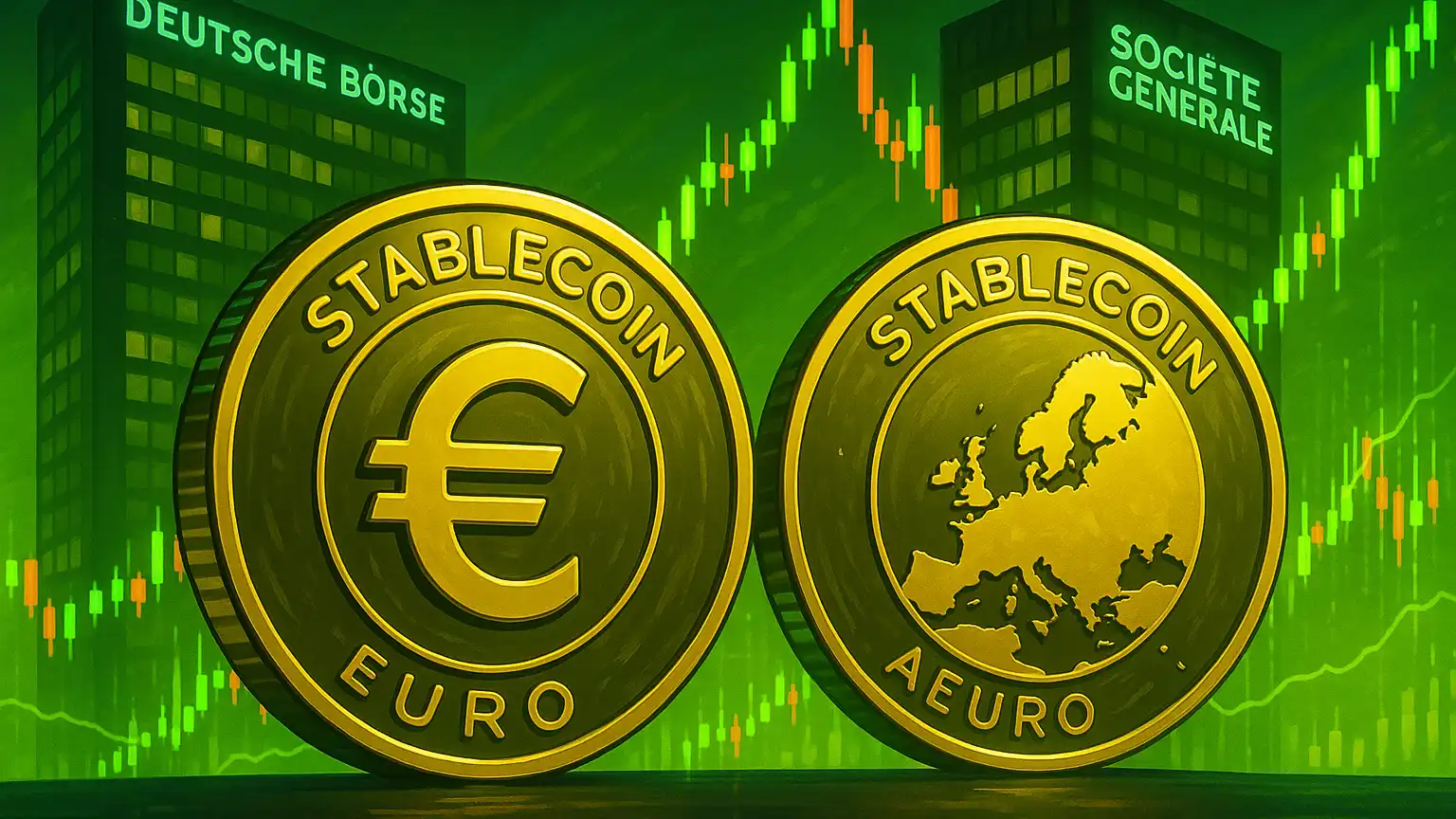A Blueprint for Tokenised Cash in Post-Trade Workflows
When Deutsche Börse Group revealed this week that it will plug Société Générale’s digital-asset arm, SG-FORGE, directly into its settlement rails, the exchange operator did more than announce another proof-of-concept. It placed a fully regulated, dual-currency stablecoin – CoinVertible – inside Clearstream’s production environment, signalling that tokenised cash is ready to graduate from sandboxes to the daily plumbing of Europe’s capital markets.
In the first implementation phase, CoinVertible will stand shoulder-to-shoulder with traditional cash positions as a delivery-versus-payment instrument for securities settlement, collateral calls and treasury funding. Because the token is issued under France’s stringent digital-asset regime and designed to be MiCA-compliant on day one, Deutsche Börse can fold it into its rule book without carving out bespoke exemptions. The immediate upside is operational: atomic settlement on-chain, intraday collateral mobility and automated reconciliation. The longer-term play is strategic. By embedding a compliant euro and dollar token now, Europe’s largest exchange group positions itself for a future in which wholesale CBDC, distributed ledger-based securities and smart-contract collateral management converge onto a single digital stack.
Implications for Banks, Asset Managers and the Coming Wave of CBDC Pilots
The announcement resonates far beyond Frankfurt. Custodian banks wrestling with T+1 settlement in the United States, asset managers chasing 24/7 liquidity and corporates looking to tokenise commercial paper all share the same pain point: today’s payment leg sleeps when target2 closes. A programmable, bank-grade stablecoin offers an always-on alternative without waiting for the European Central Bank to ship a wholesale CBDC.
For dealers, the ability to pledge CoinVertible as real-time collateral could compress margin cycles and free up balance-sheet capacity. For buy-side firms, continuous repo and intraday redemptions promise a tangible funding edge. And for regulators, the arrangement delivers a live test bed to observe how MiCA-licensed tokens behave inside systemic market infrastructures, informing the design of forthcoming technical standards.
Equally important is the precedent it sets for central-bank experiments. Both Deutsche Börse and Société Générale are active participants in the ECB’s wholesale digital-euro trials. Proving that private, fully reserved tokens can settle high-value trades safely could help shape a two-tier model in which commercial-bank stablecoins coexist with a wholesale CBDC, mirroring the relationship between deposits and reserves in today’s system.
Competitive Landscape: The Race to Deliver Settlement-Grade Stablecoins
Until recently, euro-denominated stablecoins were a rounding error next to their dollar peers, largely because regulatory clarity was absent and the addressable user base remained retail-focused. That calculus is shifting rapidly. MiCA’s final text, effective next year, creates a single passport for issuers and sets hard caps on unregulated tokens. As a result, incumbent financial institutions are scrambling to capture mindshare before the new regime goes live.
SG-FORGE enjoys a first-mover advantage: CoinVertible has been live on public and permissioned chains since April 2023, and the bank already executed tokenised bond issuances for AXA Investment Managers and the European Investment Bank. Yet competition is heating up. Circle is courting European venues with its own euro stablecoin, EURC, while UBS, Santander and BBVA are exploring in-house tokens linked to segregated cash accounts. Deutsche Börse’s decision effectively crowns CoinVertible as the reference asset within one of the world’s largest clearing ecosystems, raising the bar for contenders who must now demonstrate equal levels of transparency, redemption assurance and interoperability.
For market participants, the message is clear: the window to test and integrate settlement-grade stablecoins is closing fast. Once MiCA takes full effect and wholesale CBDC pilots mature, infrastructure will favour early adopters whose back-office systems already speak the language of tokenised cash. The Deutsche Börse–Société Générale pact therefore reads less like a pilot and more like the opening chapter of Europe’s next market standard.




